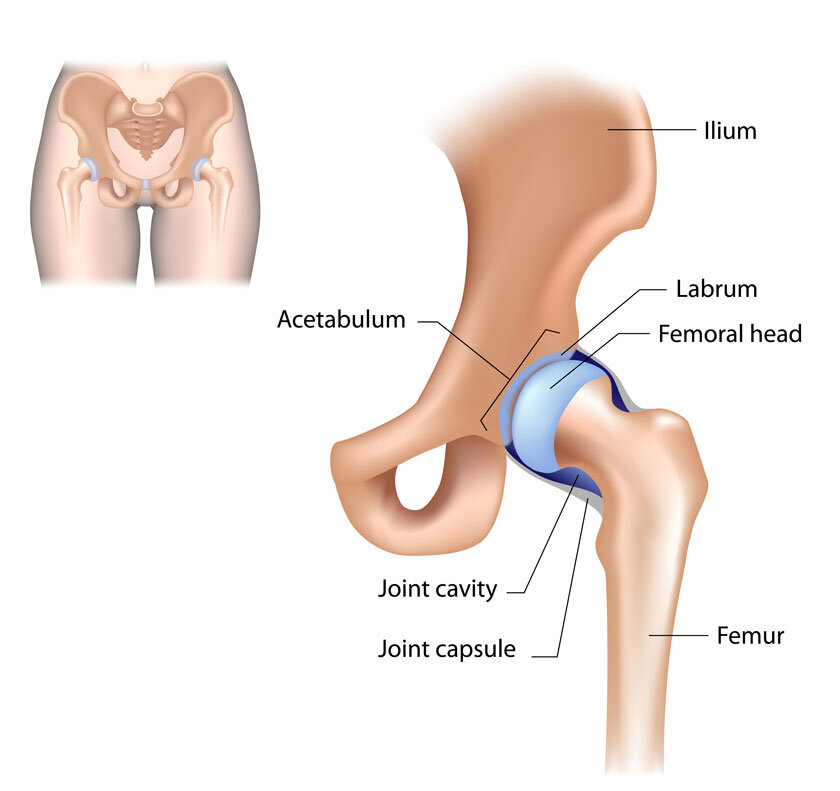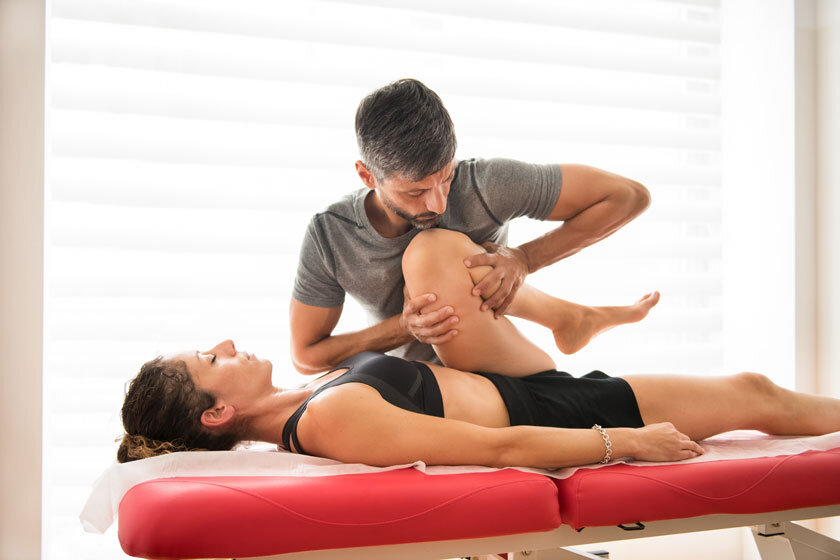Hip Pain
Your hip joint makes it possible for you to stand up, sit down, walk, run, and jump. It’s also one of the primary weight-bearing joints in the body. Because the hip is such a highly used joint in the body, it can be prone to injury especially as we age. Over time, a variety of factors, including injuries, degenerative disease, and other genetic and environmental causes, can ultimately lead to hip pain.
CAUSES OF HIP PAINS
Problems in the hip joint often result in discomfort in your thighs, buttocks, groin, or throughout the hip/pelvic area. Limping, swelling, popping, clicking, loss of motion, a “catching” feeling, or tenderness in the hip area are some symptoms that might occur.
Hip pain can be acute (short-term) or chronic (long-lasting). Common causes of hip pain include:
Arthritis of the Hip
Arthritis refers to inflammation of one or more of your joints and is a common problem for many people after middle age. Although there are several types of arthritis, osteoarthritis (OA) is the most common form that affects the hip. In OA, the cartilage in the hip joint gradually wears away over time. As this happens, the cartilage becomes frayed and rough, leaving the hip bones less protected and vulnerable to rubbing against each other. To make up for the lost cartilage, the damaged bones may start to grow outward and form bone spurs (osteophytes). Arthritis pain is typically a dull ache. However, it can become extremely painful with everyday movements. It can be caused by everyday wear and tear or a previous hip injury.
Learn more about OA of the hip: Osteoarthritis of the Hip
Bursitis of the Hip
Bursitis of the hip, also referred to as trochanteric bursitis, is irritation or swelling of the trochanteric bursa. The trochanteric bursa is a small, fluid-filled sac found on the outside of your femur. It acts as a cushion for a thick tendon in your leg. Risk factors associated with this condition include repetitive stress, spine disease, rheumatoid arthritis, bone spurs, and other conditions.
Femoroacetabular Impingement
Femoroacetabular impingement (FAI) refers to impingement (pinching or compression of soft tissue) that is occurring where the femur (thigh bone) meets the acetabulum (hip socket). FAI limits the joint's normal range of motion.
Labral Tears
The acetabular labrum is a fibrous rim of cartilage around the hip socket that is important in allowing a normal range of motion of the hip. It helps keep the head of the femur (thigh bone) inside the acetabulum (hip socket), providing stability to the joint. When the labrum is torn, frayed, or damaged this is an acetabular labrum tear which can cause pain, stiffness, and other disabling symptoms of the hip joint. A labral tear can be minor or more severe which will determine the type of treatment recommended.
Hip Tendonitis
When tendons in the hip become inflamed or damaged, it is known as tendonitis. Overuse and impingement are two common causes of hip tendonitis.
SciaticaPain in the lower back or hip that radiates to the back of the thigh and into the leg is known as sciatica. Sciatica is usually a symptom of another condition, often related to the spine. This can be the result of general wear and tear caused by aging, as well as any sudden pressure on the spinal discs that cushion the vertebrae of your lower spine. Your orthopedic specialist will help you identify the cause of the pain so it can be treated.
Iliotibial (IT) Band Syndrome
Iliotibial band syndrome is an injury or damage of the tendon that stretches on the outside of the leg from the hip to the knee. The injury primary results from overexertion or overuse. The condition leads to increased tenderness and pain of the hip, outer thigh and knee.
Gluteus Medius and Minimus Tears (Abductor Tendon Tears)
The buttocks contains a large group of individual muscles collectively called the hip abductors. When any of these muscles tear, it can greatly affect the hip’s wide range of motion and stability.
Hamstring Strains and Tears
A pulled hamstring or strain is an injury to one or more of the muscles at the back of the thigh. They are especially common in athletes who participate in sports that require sprinting, such as track, basketball, or soccer.
Avascular Necrosis
Avascular necrosis (AVN), also called osteonecrosis refers to the death of bone tissue due to a lack of blood supply. A broken bone or dislocated joint can interrupt the blood flow to a section of bone.
Fractures
Hip fractures can occur for many reasons and can happen at any age. However, older people are at a higher risk of hip fracture because bones tend to weaken with age (osteoporosis). Because of this, a fall from a standing height, or simply twisting the wrong way, can result in a hip fracture.
Hip Therapy & Treatments
Dr. Sparks works hard to stay on top of the latest and most advanced surgical and nonsurgical treatments for hip pain. Depending on the condition, there may be several nonsurgical options for hip pain treatment before surgery would be considered.
Dr. Sparks will visit with you to assess which part of the hip hurts and the intensity of the pain. Diagnostic images such as an x-ray or MRI may also be needed in order to see inside your hip joint and look for tears, fractures, or other signs of injury.
Nonsurgical therapy and treatment options for the hip may include:
Supplements to strengthen joints and bones
Activity changes
Medications
Physical therapy
Stem cell therapy
Hip surgery may be recommended based on a variety of factors including the cause of the hip pain, the condition of the joint, and the results of nonsurgical treatment options. Hip surgeries may include:
Different Hip Replacement Surgeries
Schedule an Appointment
If you are experiencing hip pain or loss of function and want to restore your quality of life, an orthopedic specialist can help. Dr. Sparks, located in Conroe, can help. Call 936-539-2663 to schedule an appointment.



